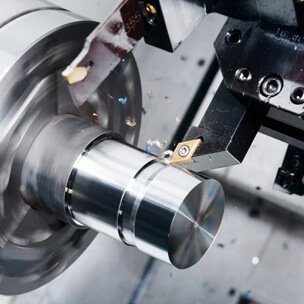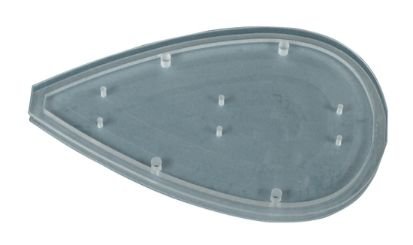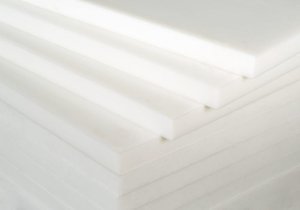Custom High-Precision CNC Lathe Services: Complex Parts Done in One
Get custom CNC lathe services for aluminum, steel, and plastic components. Stop waiting for quotes. Instantly launch your project with Extreme Accuracy y ISO 9001 Certified Quality Assurance.
CNC Turning: Your Solution for Precision Prototyping and Production
CNC Lathe Services are the foundation of modern machining, transforming detailed digital designs into precise, low-tolerance mechanical components. By combining high-speed rotation with advanced cutting control, Torneado CNC offers superior efficiency and tightest tolerances. Whether for rapid prototypes or high-volume production runs, expert machinists and automated lathes deliver consistent, high-quality results across a wide range of materials.
Why Choose Mekalite CNC? Core Advantages Demystified
To make suitable decisions, we should understand the technology and its terms. This clarity ensures that your project needs perfectly match what our advanced manufacturing process can deliver.
The Principle of CNC Turning: Speed and Consistency
Think of a potter’s wheel, but for metal or plastic. The main idea of CNC turning is similar: a solid material block, usually round bar stock, is held securely in a chuck and spun at high speed. Then a cutting tool moves into the part to remove material, shaping it into the desired cylindrical feature.
This method works exceptionally well for making components with concentric features, such as shafts, pins, rings, and custom fittings, guaranteeing high concentricity.
Defining “CNC”: Our 3P Guarantee (Precision, Perfection, Pace)
The “CNC” stands for Computer Numerical Control. Instead of manual control, the entire operation follows pre-programmed computer code.
This digital control provides three major benefits to your manufacturing process: incredible Precisión (ensuring tight tolerances), perfect Repetibilidad (from the first part to the ten-thousandth), and unmatched Pace (Efficiency) from optimized routes and speeds.
Lathe and Mill-Turn Integration: Seamlessly Handling Complex Geometry
A common decision is choosing between CNC turning and CNC milling. Both remove material, but they work differently and suit different part shapes. Mekalite experts guide you in making the right choice in advance to save cost and manufacturing time.
CNC milling uses a spinning cutting tool that removes material from a fixed workpiece. It works best for making parts with flat surfaces, pockets, holes, and complex, non-symmetrical shapes.
The guide list for reference:
| Criterion | CNC Lathe / Turning Services | Servicios de fresado CNC |
| Primary Part Shape | Cylindrical, conical, round, or concentric parts. | Prismatic, flat, or complex non-symmetrical shapes. |
| Tool/Workpiece Motion | En workpiece rotates; the cutting tool moves along it. | En cutting tool rotates; the workpiece is typically stationary or moves on multiple axes. |
| Best for… | Shafts, pins, bushings, rings, custom fittings, nozzles. | Enclosures, brackets, manifolds, gears, complex molds. |
| Coste | Highly cost-effective for round and cylindrical parts and features. | More efficient for creating flat surfaces, pockets, and off-axis features. |
| Typical Appearance | Often shows concentric tool marks (lay) around the diameter. | Can show linear or contoured tool marks depending on the toolpath. |

Powerful Mill-Turn Centers for Done-in-One Machining
Modern manufacturing blurs these lines. Advanced machines like CNC lathes with Y-axis capabilities or sophisticated Mill-Turn Centers combine both processes. These powerful machines can perform milling operations on a turned part without a second setup, enabling “done-in-one” machining for highly complex components that feature both cylindrical and prismatic geometries.
The Mekalite Digital Delivery Workflow: From CAD to Part
Understanding how production works helps you prepare the right information for a smooth manufacturing process. Here’s the transparent journey your part takes from digital concept to physical component with Mekalite.
Step 1: CAD Model Upload & Technical Drawing Review
This is the basic blueprint. A 3D CAD drawing (often in stp, step, igs or x_t format) defines the part’s shape. A 2D technical drawing is equally important, as it shows vital details, such as critical tolerances, thread specs, surface finish requirements, and key inspection dimensions.


Step 2: CAM Programming & Path Optimization
Our engineers use Computer-Aided Manufacturing (CAM) software to instantly translate your CAD model into optimized G-code. This code tells the CNC lathe exactly how to move, which tools to use, and what speeds to apply for maximum efficiency and precision.
Step 3: Machine Setup & Precision Calibration
A skilled machinist prepares the CNC lathe. They securely clamp the raw material into the machine’s chuck, load the needed cutting tools into the turret, and check all offsets and coordinates. This setup phase is critical for achieving guaranteed accuracy.


Step 4: G-Code High-Precision Machining Execution
The machine runs the G-code program. This usually involves several steps, starting with roughing passes to remove most of the material quickly. Then come finishing passes to achieve the final dimensions, tightest tolerances, and specified surface finish.
Step 5: CMM-Grade Quality Inspection & Verification
The part moves to quality control after machining is done. Using precision tools like calipers, micrometers, and Máquinas de medición por coordenadas (MMC), we measure the part to verify that every dimension meets your specifications with CMM-level confidence.

Material Selection: Balancing Performance, Cost, and Machinability
Choosing the right material balances performance, cost, and machinability. The selection process starts by considering the application’s required key material properties, such as strength, hardness, chemical and corrosion resistance, weight, and thermal stability.
We work with a wide range of metals and plastics, each with unique strengths.
Metales
- (e.g., 6061, 7075): Lightweight, offers a great strength-to-weight ratio, and is easy to machine, making it cost-effective. Best for: Prototypes, enclosures, aerospace fittings, and consumer electronic components.
- Stainless Steel (e.g., 303, 304, 316): Known for high strength, durability, and excellent corrosion resistance. Best for: Medical devices, food-grade equipment, marine hardware, and chemical processing components.
- Carbon & Alloy Steel (e.g., 1018, 4140): Strong, tough, and generally economical. Can be heat-treated for increased hardness and wear resistance. Best for: Shafts, gears, fasteners, and high-wear industrial parts.
- Brass & Copper: Easy to machine, corrosion-resistant, and have excellent electrical and thermal conductivity. Best for: Electrical connectors, plumbing fittings, valves, and decorative hardware.
- Titanio: The best in strength-to-weight ratio, with exceptional resistance to corrosion and extreme temperatures. Best for: High-performance aerospace components, medical implants, and racing applications.
Plásticos
- Delrin (Acetal): Features high stiffness, low friction, excellent dimensional stability, and good chemical resistance. Best for: Precision bearings, gears, rollers, and fuel system components.
- Nylon: Offers great toughness, impact strength, and wear resistance. Best for: Washers, insulators, wear pads, and low-load gears.
- PEEK: A high-performance thermoplastic with outstanding resistance to high temperatures, harsh chemicals, and wear. Best for: Demanding applications in aerospace, medical (implants), and semiconductor manufacturing.

Beyond Basic Turning: One-Stop Complex Feature Machining
Today’s CNC lathes can do much more than make simple cylinders. They perform many advanced operations in one setup, allowing for complex multifunctional parts without secondary handling.
- Facing: Creates a flat, high-precision surface on the end of the workpiece, often used as a key reference plane.
- Grooving: Cuts precise channels or grooves, commonly used for O-rings, retaining clips, or aesthetic purposes.
- Threading: Makes internal (tapped) or external (turned) screw threads to exact specs for fasteners and connections.
- Drilling & Boring: Drilling makes a high-concentricity hole along the part’s centerline. Boring then enlarges that hole to a precise diameter with a smooth internal finish.
- Knurling: Creates a patterned, textured surface on a part, typically for providing a secure grip on knobs or handles.
- Parting: The final step where a special tool precisely cuts the finished component off from the remaining bar stock.
The Power of Live Tooling and Mill-Turn Centers
A key advance in modern CNC Lathe Services is the addition of live-tooling capabilities. These are powered, rotating tools—like end mills or drills—mounted directly in the lathe’s turret.
This technology lets the machine perform milling, drilling, and tapping operations on the workpiece off-center or on its face. It allows for features like flats, slots, and radial holes without moving the part to a separate milling machine. This “done-in-one” capability drastically reduces setup time, improves accuracy, and significantly lowers the cost of complex components.
Design for Manufacturability (DFM): Maximizing Cost Efficiency
While CNC turning is efficient, certain design features can greatly affect the final part cost. Understanding these factors helps you make small design changes that can lead to big savings. Mekalite engineers provide proactive DFM feedback.
Key Cost Drivers & Optimization
- Material Cost & Machinability: The raw material price is a direct cost. Also, harder or more abrasive materials (like Titanium or high-nickel alloys) are harder to machine, requiring slower speeds, special tooling, and more machine time, which increases cost.
- Tight Tolerances: The precision of a part is a main cost driver. A standard tolerance (e.g., $\pm 0.125\text{mm}$) is much easier and faster to achieve than a very tight tolerance (e.g., $\pm 0.01\text{mm}$). The latter requires more careful machining and extensive CMM inspection, adding significant cost.
- Part Complexity & Geometry: Features that add complexity will add cost. This includes very deep or narrow grooves, extremely thin walls that might vibrate, and complex curved surfaces that require special form tools or extended programming time.
- Surface Finish Requirements: A standard machined finish is the most cost-effective. Requiring a smoother, mirror-like finish needs additional finishing passes at slower rates or extra operations like grinding, honing, or polishing, all of which add to the cost.
- Setup Time vs. Quantity: A large part of the cost for low-volume runs is the initial machine setup time. This fixed cost is spread over the number of parts produced. Therefore, as the quantity increases, the per-part price decreases significantly, making higher volumes much more economical.


DFM Pro Tips for Turned Parts (Save Time and Cost)
Applying Design for Manufacturability (DFM) principles is the best way to reduce costs and improve the quality of your turned components.
DO:
- DO Specify Radii on Internal Corners: Sharp internal corners are nearly impossible to create with a standard turning tool and create stress points. Always design with a corner radius that is equal to or larger than the tool’s nose radius.
- DO Design with Standard Stock Sizes in Mind: If your part’s maximum outer diameter (OD) is $25\text{mm}$, it can be made efficiently from $25\text{mm}$ bar stock. If your design calls for $25.5\text{mm}$, it must be machined from the next largest standard size (e.g., $30\text{mm}$), wasting material and time.
- DO Keep Hole Depth-to-Diameter Ratios Reasonable: Drilling deep, narrow holes (a ratio greater than $10:1$) is very challenging. It requires special tools, peck drilling cycles, and increases the risk of tool breakage and drift.
- DO Clearly Define Only the Critical Tolerances: Apply tight tolerances only where they are functionally necessary. Over-tolerancing non-critical features adds significant, unnecessary cost to inspection and manufacturing.
DON’T:
- DON’T Design Overly Long, Thin Parts: Parts with a high length-to-diameter ratio tend to bend and vibrate during machining, making it hard to hold tight tolerances.
- DON’T Specify a Smoother Surface Finish Than Necessary: Only call out a fine surface finish on surfaces where it is functionally required, such as a sealing face or bearing journal.
Partner with Mekalite: Our Commitment to Your Success
Picking a qualified and reliable supplier is as important as the design itself. A strong manufacturing partner acts as a seamless extension of your engineering team. Use this checklist to evaluate potential service providers.
Lead Time & Logistics: A supplier’s quoted lead time must align with your project timeline. Ask about their typical turnaround times for projects of similar complexity and volume. Confirm they can reliably meet your deadlines and handle the necessary shipping logistics.
Technical Capabilities: Do they have the right equipment for your part? Review their machine list to see if they offer multi-axis, mill-turn, or live-tooling capabilities if your part has complex features. Check that they can hold your required tolerances and work with your specified materials.
Quality Control Systems: A commitment to quality is a must. Ask about their inspection process and the equipment they use. Are they ISO 9001 certified or compliant? This certification shows a robust and documented quality management system. Request sample inspection reports to see their process in action.
Expertise & DFM Support: Look for a partner with proven experience, especially in your industry (e.g., aerospace, medical, automotive). A key sign of expertise is their willingness and ability to provide proactive DFM feedback to help optimize your design for cost and quality.
Communication & Support: The right partner is responsive and easy to work with. How quickly do they respond to quote requests? Is it easy to get in touch with an engineer to discuss technical details? Clear and proactive communication is essential for a successful project.


Ready to Turn Your Design into a Precision Component?
CNC Lathe Services provide a powerful, versatile, and highly precise solution for manufacturing cylindrical parts. From simple pins and shafts to complex components with milled features, this technology is a cornerstone of modern production.
Project success depends on a few key factors: understanding the process capabilities, designing for manufacturability (DFM), and choosing the right materials and manufacturing partner.
With this knowledge, you are now ready to confidently source your next CNC-turned part project, ensuring the best balance of quality, cost, and performance.
PREGUNTAS FRECUENTES
What’s the difference between CNC Lathe Services and CNC Turning Services?
These terms are used interchangeably, both referring to the precision machining process where material is removed from a rotating workpiece to create cylindrical components.
What materials can be used with CNC Lathe Services?
CNC Lathe Services can work with various metals (aluminum, stainless steel, titanium) and plastics (Delrin, Nylon, PEEK) depending on your application requirements.
How do CNC Lathe Services differ from CNC Milling?
In CNC Lathe Services, the workpiece rotates while tools remain relatively stationary, ideal for cylindrical parts. In milling, the tool rotates while the workpiece remains fixed, better for flat or complex non-symmetrical shapes.
What advanced capabilities do modern CNC Lathe Services offer in 2025?
Modern CNC Lathe Services now include live tooling, mill-turn capabilities, multi-axis machining, and “done-in-one” processing that combines turning with milling, drilling, and threading operations.
How can I reduce costs when using CNC Lathe Services?
Design for manufacturability by specifying appropriate tolerances, using standard stock sizes, avoiding overly complex geometries, and ordering in higher volumes to distribute setup costs.


















